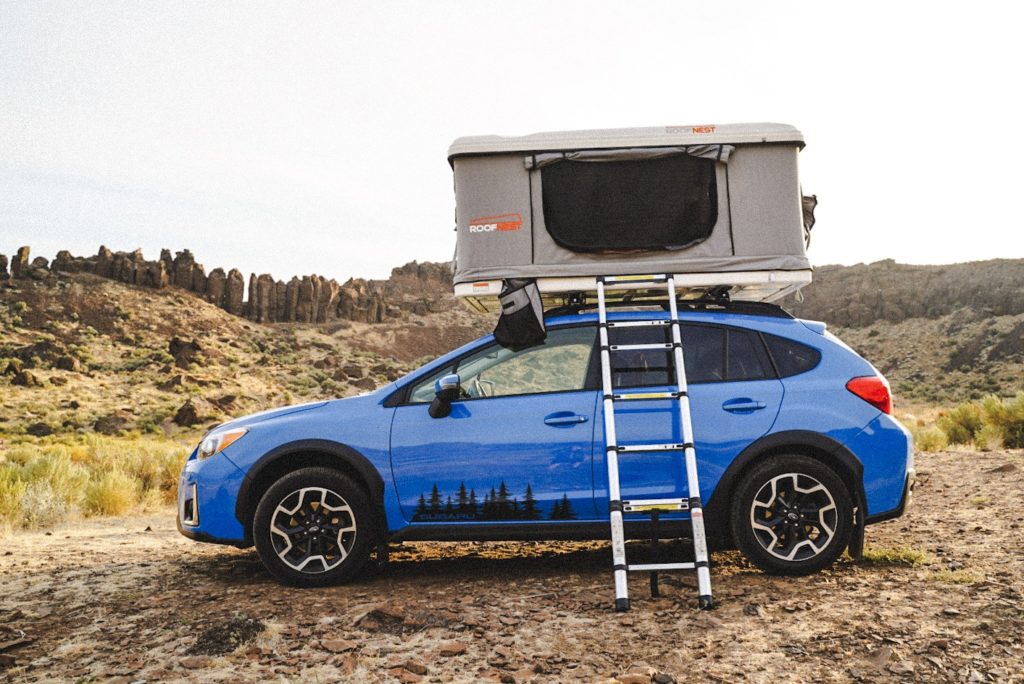This post contains affiliate links.
Winter is here in the Pacific Northwest which means rain, snow, and lots of moisture which is bad for your tent. Here’s 5 tips to get your roof top tent ready for winter.
1. Air it out
Before closing up your tent for winter, make sure everything is cracker dry. This is important in the PNW because dry days are few and far between. If you plan on using your tent in the rain or snow, be sure to have a garage or parking garage to air it out between trips. If you don’t, it could lead to mold or mildew build up. Check out this post on how to prevent mold!
2. Remove bedding
If you use your tent in the winter, it’s a great idea to remove bedding and pillows between trips. Blankets and pillows can hold moisture and lead to mold. It is perfectly fine to leave them in if you’re located in a dryer climate.

3. Use a fan
Condensation can build up on the tent wall or on bedding just from your warm breath meeting the cold air. Using a small fan in your tent can blow out the condensed air and pull in fresh air. This is a great way to wake up with dry(er) tent walls and bedding.
4. Be selective with conditions
If you don’t have a garage or parking garage to air out your tent between trips, you may want to be more selective on when you camp. In Seattle, we get constant rain all winter and dry warm days are very rare. It is a good idea to check on conditions to make sure your tent isn’t soaked all winter long. This is one disadvantage of a roof top tent vs a ground tent. A ground tent can always be brought inside to dry. Check out the other posts on both pro’s and con’s of roof top tents.
5. Remove your tent
If you don’t plan on winter camping much, it may be a good idea to remove your roof top tent for winter. Over the past few years I have rarely used my tent during the rainy season due to many factors listed above. This has lead me to remove my roof top tent and reinstall it once the weather is glorious in the PNW.
If you do leave your tent on, just be aware of condensation so mildew or mold doesn’t form.
Thanks for reading this post. We hope it gave you some ideas how to prep your roof top tent for winter adventures. If you’re still in the market for a rooftop tent, consider ordering here. Read here on why we love ours. Life’s better on top!
Check out this video on stopping roof top tent mold.
About us.





